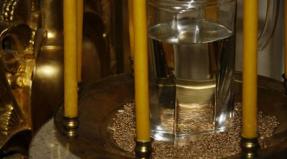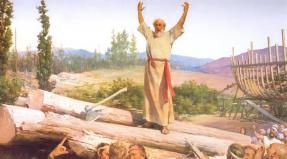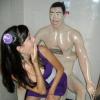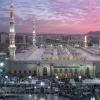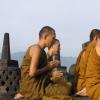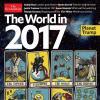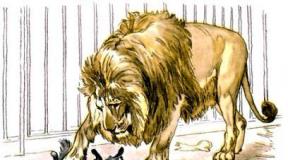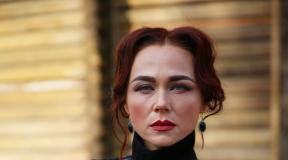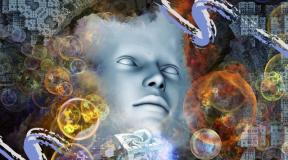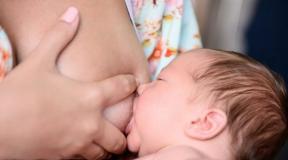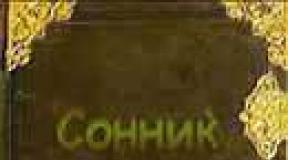Archbishop Anthony (Medvedev): Monk until his last breath. Vicar of the Kazan diocese
September 23 marks the 10th anniversary of the death of a remarkable bishop (I served with him for 20 years), the author of the service, Archbishop Anthony (Medvedev) of Western America. We bring to the attention of our readers the memoirs about Vladyka, collected by Archpriest Peter Perekrestov.
Monk until his last breath
Metropolitan LAVR, Jordanville 2005
 In connection with the anniversary of the death of the ever-memorable Archbishop of Western America and San Francisco Anthony (Medvedev), I would like to note some features of this kind and heartfelt archpastor.
In connection with the anniversary of the death of the ever-memorable Archbishop of Western America and San Francisco Anthony (Medvedev), I would like to note some features of this kind and heartfelt archpastor.
My first meeting with the future Archbishop Anthony took place at the monastery in Ladomirovo. As you know, Vladyka Anthony was tonsured at the Milkovo Monastery in Yugoslavia, the same monastery where both of his predecessors in the Western American See - Archbishop Tikhon and I. In Milkovo, the abbot was Schema-Archimandrite Ambrose. When Fr. Ambrose was seriously ill, he transferred Hieromonk Anthony under the spiritual leadership of Archbishop Vitaly (Maksimenko). With the last Fr. Anthony met at his ordination in Belgrade and fell in love with him immediately. Then Fr. Anthony was still a hierodeacon. After the death of Schema-Archimandrite Ambrose, Hieromonk Anthony moved to our place in Ladomirovo in order to be spiritually nourished by Vladyka Vitaly.
During the war, our brotherhood had to evacuate to Geneva. We worked there, awaiting permission to move to the United States. Father Anthony's main obediences were the choir and the editing of the liturgical calendar. He was an excellent connoisseur of the Rite and lived in worship. I remember how he tried to introduce the tunes he had mastered in Milkovo into our choir singing.
With the blessing of the rector of the Cathedral of the Exaltation of the Cross in Geneva, Hieromonk Leonty (Bartoshevich), Fr. Anthony was also engaged in pastoral activities - he confessed and nourished the parishioners. I remember a family where there was no agreement between husband and wife on church issues. Father Anthony was very worried about this disagreement and began to visit the family and conduct spiritual talks with his spouses. Through his compassionate pastoral love, he was able to spiritually adjust his wife and thus bring peace to the family.
The future Archbishop Anthony was very close in spirit to the Bartoshevich brothers, Fathers Leonty and Anthony, whom he knew from Yugoslavia. In Geneva, his spiritual mentor was the Valaam hegumen Philemon. He was also close to the future Archimandrite Nektarios, the confessor of the Gethsemane women's monastery. During the Second World War, Hieromonk Anthony served as a patron of the ROA military. His closest assistant was his psalmist, the future Fr. Nectarius. Friendship between Vladyka Anthony and Fr. Nektarios were bound by strong spiritual bonds until the end of their lives.
In November 1946, our brotherhood arrived in America and settled in Jordanville. In the monastery, in addition to kliros obedience, Fr. Anthony milked the cows, often falling asleep under the cows. For the feast of the Nativity of Christ, Archbishop Vitaly, knowing Father Anthony's pastoral abilities, sent him to serve in Lakewood and Vladimirskaya Gorka. Subsequently, Fr. Anthony founded and served wards in Lincoln, Nebraska, Cleveland, and Milwaukee.
The consecration of Archimandrite Anthony as Bishop of Melbourne took place in 1956 at the Ascension Cathedral in the Bronx. I was then a hieromonk. I remember how I approached His Beatitude Metropolitan Anastassy and he affectionately said to me: "Study, study ..." I also remember that before his ordination Archimandrite Anthony showed me his word when naming and asked: "What do you think?" Then he greatly appreciated the advice and later, as a bishop, he loved to consult.
Archbishop Anthony, having talked with Bishop Averky, proposed my candidacy for bishop, secretary of the Synod of Bishops. After my consecration until the death of Archbishop Anthony in 2000, he and I were members of the Synod of Bishops and worked together. He was very cordial and sincere and never did anything for his own benefit, but only for the benefit of the Church and for the glory of God. He had no personal life, but only life in the Church, with Christ.

It happened that Archbishop Anthony saw some embarrassing events in the Synod. He usually shared, wrote letters, but always in a gentle and sincere manner, with a sore heart. When the question of the glorification of the New Martyrs of Russia was discussed, in particular, there was no unanimity among the episcopate. Vladyka Anthony was a peacemaker and always tried to achieve a peaceful solution to all issues.
I remember that Archbishop Anthony of Geneva was dissatisfied with the service of the Royal Passion-Bearers. He believed that the texts of the stichera were very long, and the canon of the service itself is not addressed to the Tsar-martyr, but is a repentant appeal to the Lord God. Vladyka Anthony shared this with Archbishop Anthony of Western America and hoped that the latter would revise this service. He (Archbishop Anthony of Western America) perfectly composed a general service to all the New Martyrs and Confessors of Russia.
The ever-memorable Archbishop Anthony, like His Beatitude Metropolitan Anthony and St. John (Maximovich), had a universal perception of the Church. All three hierarchs were rooting for the Local Churches, for persecuted Orthodox Christians, for church divisions in the Russian Church. At meetings of the Synod of Bishops, Archbishop Anthony always stood up for. In this he was especially supported by Archbishops Seraphim of Chicago, Nikon of Washington and Anthony of Geneva. Vladyka Anthony did not approve of some deviations of the Local Churches, in particular, but believed that all Orthodox Christians should live in peace and unity.
In San Francisco, Vladyka Anthony lived alone - he cooked and cleaned himself. As a monk, in the person of Schema-Archimandrite Ambrose Milkovsky, he was formed by the Old Russian school of monasticism and remained a representative of this school until his last breath. I repeat, he did nothing for himself, but only for God, for the Church.
Vladyka Anthony was buried here with us, in the Holy Trinity Monasteries, in the burial vault behind the church. There is a lack of him among our episcopate, but I believe that he prays for us, worries about us.
The kindest of all people
Nun Elizabeth (Cedova), Gethsemane
My acquaintance with Archbishop Anthony took place in the winter of 1997, in the Olive Monastery.
Vladyka Anthony immediately told the sisters of our monastery that this was his last visit to, that it was here, in the Holy Land, that he had to make some important decision. In a word, Archbishop Anthony came to pray and say goodbye to the Holy Land. For us, the sisters of the Olive Monastery, the month Vladyka Anthony spent in our monastery was a great consolation. I would like to tell you at least briefly about some of the moments that have remained in my memory.
After the death of Saint John, the Miracle Worker of Shanghai and San Francisco, Bishop Anthony was appointed to the vacant Western American See. In 1968 he arrived in San Francisco and in the same year was elevated to the rank of archbishop.
Wherever he served, Vladyka Anthony paid special attention to youth work and church and school affairs. Since 1978, Vladyka Anthony has been a member of the Synod of Bishops, participated in the preparation of the Councils of Bishops. As hegumen and archimandrite, he prepared and edited the Typikon with liturgical instructions - an appendix to the Trinity calendar. He was an excellent connoisseur of the Church Rite and divine services, and on behalf of the Synod of Bishops, he compiled liturgical texts for services (together with St. John, the Wonderworker of Shanghai and San Francisco) and prayers, etc. Archbishop Anthony composed the entire service to the Holy New Martyrs and Confessors of Russia.
Archbishop Anthony will also go down in church history as the main inspirer of the glorification of the great saint of the twentieth century - St. John, Shanghai and San Francisco Miracle Worker. Vladyka Anthony headed the examination of the remains of St. John in 1993, and also carried out all the preparatory work for the glorification, including the compilation of most of the service of St. John.
In late 1999, Archbishop Anthony's health began to deteriorate. Not sparing himself for the sake of the Church and the flock, Vladyka did not pay attention to his ailments until he began to move around and read with great difficulty.
On January 1, 2000, the Synod of Bishops granted leave to Archbishop Anthony for medical treatment, and the temporary administration of the Western American Diocese was entrusted to the vicar bishop, Bishop Cyril of Seattle.
During his treatment, Vladyka Anthony, nevertheless, tried to attend all the main divine services. He performed all services in 2000. Despite his poor eyesight, he read the liturgical texts during services, often by heart.
After Easter, Vladyka Anthony was hospitalized for long-term treatment, and since then he has repeatedly been in the hospital or has been treated at home. He performed his last divine service on the day - the doctors allowed him to come to the church from the hospital that day. He had been preparing for this service all week, pondering how he would perform the liturgy in a wheelchair (by that time he could no longer walk) and at what moments he would get up.
The cathedral parish decided on the day of the Transfiguration to celebrate the just past day of the Lord's angel. There are no words to convey the joy that Vladyka Anthony felt seeing his flock and serving the Divine Liturgy. After the liturgy and prayer service to the Monk Anthony the Roman, a meal was held, at which Vladyka received congratulations. By the evening of that day, he returned to the hospital.
In early September, Archbishop Anthony was released home. On September 10, on the day of commemoration of the Monk Job of Pochaev, Archbishop Anthony was for the last time in the Cathedral. During the early Liturgy, he prayed and received the Holy Mysteries of Christ, then venerated the icon of St. Job and the relics of St. John, turned his face to the believers and left the cathedral. After the liturgy, the doctor, having examined the legs of Vladyka Anthony, told him that he must immediately go to the hospital, otherwise Vladyka could die of gangrene. Vladyka Anthony decided to stay for a day in order to listen through a loudspeaker conducted in his cell, and on September 11, after the liturgy, which Vladyka also listened to, he was taken to the hospital.
At the hospital, Vladyka Anthony's health became weaker every day. He tried to hide the severe pain, but it was obvious to the visitors. Archbishop Anthony's confessor, Archpriest Stefan Pavlenko, introduced him on Tuesday, September 19, and the last three days one of the clergy with Vladyka spent the whole night in the hospital.
Since Thursday, Vladyka Anthony felt bad - he already reacted little to those who came, and was more focused on his condition. On Friday, September 22, at about 11 pm, Vladyka Anthony received the last communion of the Holy Mysteries of Christ. He then breathed with great difficulty. It seemed that he was half-conscious. Two priests read the Canon on the exodus of the soul from the body while singing the parishioners of the cathedral gathered by that time. After the canon, those present sang, beloved by Vladyka, "We fence with the Cross" and tears flowed from his right eye - he heard and understood everything! Then everyone said goodbye to their archpastor, asking for forgiveness and blessing, kissing his hand.
Priest Alexander Krasovsky spent the night with Archbishop Anthony, and in the morning he was replaced by Archpriest. Mark Gomets, in whose arms the ruling archpastor of the Western American Diocese died peacefully around noon.
The news of the death of Vladyka Anthony was immediately communicated to the conciliar clergy. It was a school day and the students of St. Cyril and Methodius Gymnasium, whom Vladyka loved so much, were the first to learn about the death of Vladyka Anthony. In the gymnasium, the first funeral prayer was performed for the newly reposed Archbishop Anthony. By 1 o'clock in the afternoon, 5 priests gathered at the bed of Vladyka Anthony and they performed the Canon according to the departure of the soul from the body, and then Vladyka's body was transported to the Cathedral. By 5 pm Bishop Kirill arrived at the cathedral from Reno (on that day for the first time in the new mission of the Church Abroad), Archpriest Cyril. Stefan Pavlenko and Priest Pavel Volmensky and together with the cathedral clergy dressed Vladyka Anthony in monastic attire and a small bishop's vestment. After the all-night vigil, which was attended by many parishioners who learned about the death of Vladyka, the first panikhida was served.
All night long the parishioners of the cathedral read the Psalter over the body of the newly departed. On Sunday, after the late liturgy, a second memorial service was performed. Before the funeral service, Bishop Kirill spoke a heartfelt word about what a great bishop Vladyka Anthony was, how he knew how to forgive and how the newly reposed personally helped him to understand the essence of conciliarity in the Church. The third requiem was served on Sunday evening. It should be mentioned that the oldest cleric of the Russian Church Abroad, Protopresbyter Ilya Ven, took part in this funeral service. Father Ilya, a 103-year-old elder, almost never comes to church services, but made a special effort to come and pray for Archbishop Anthony, whom he loved and respected very much. The clergy read the Gospel all night over the body of the newly departed.
On Monday, September 25, at 9 am, a funeral liturgy was served with the participation of a large number of diocesan clergy, and in the evening parastas with the rite of farewell. Parastas was headed by Bishop Kirill, co-served by Bishop Iovan of the Serbian Orthodox Church, diocesan clergy and seven Serb priests. Before parting, Archpriest Stefan Pavlenko spoke his word. He spoke of the schema-monk lying in front of the worshipers. Vladyka Anthony did not tell anyone that he had accepted the Great Schema before becoming a bishop, but he spent his life as the strictest monk. During the farewell, Bishop Joban emphasized that although we had lost the archpastor, we found a new prayer book at the throne of the Lord, and that we should not so much grieve that Vladyka Anthony was lost, but thank God that he was.
Numerous worshipers quietly, slowly, with a feeling of gratitude, and at the same time feeling orphaned, approached the coffin of their archpastor and kissed his hands. At this time, the singers sang various hymns, and ended up singing - everyone in the church joined in the singing of these stichera and the concluding words: "Christ is risen from the dead, trampling down death by death, and giving life to those in the grave."
Cathedral Protodeacon Fr. Nikolai Porshnikov, the protege of St. John, spent the whole week in the hospital and, upon learning of the death of Vladyka Anthony, with whom he served for 32 years, he was very worried that he could not participate in the funeral services. He even wondered why the Lord was punishing him. On the day of parastas and farewell to Archbishop Anthony Fr. Nikolai underwent a medical procedure and was under anesthesia. At about 8 pm the doctor unexpectedly reported Fr. Nikolay that he was allowed to go home. Just at that moment, visitors and Fr. Nicholas asked them to take him home for a cassock, and then to the cathedral.
And at the end of the service, Fr. Nicholas, takes a blessing on the surplice, puts on his vestments and pronounces the last litany of parastas about his archpastor: “We also pray for the newly reposed servant of God, Archbishop Anthony ...”, and then “Eternal memory”. Isn't it a miracle, isn't it the mercy of God? At about 10 pm, the coffin with the remains of Vladyka was carried around the temple, which he loved so much, and put on the hearse. The hearse drove around the block once and then drove the coffin to the airfield. The clergy and worshipers for a long time looked with sorrow at the departing hearse. Vladyka left our cathedral forever.
The funeral service and burial, at the request of Archbishop Anthony, were held at Holy Trinity Monastery in Jordanville. 10 clergymen and about 50 people from the Western American Diocese had the opportunity to participate in the funeral service. The body of the newly departed arrived at the monastery on the day of the Feast of the Exaltation. In the evening, a funeral all-night vigil was performed, and then the brethren of the monastery read the Gospel at the tomb all night.
On Thursday, seminary classes were canceled and a funeral liturgy was served. Towards the end of the liturgy, a large host of clergy and believers arrived from many cities and states of America - there were even clerics from. After the liturgy, the brethren of the monastery organized a memorial meal in memory of Vladyka. Due to the large number of worshipers, tables were laid both in the refectory of the monastery and in the large assembly hall of the seminary. By 1 pm the monastic funeral service began. The funeral service was led by the abbot of the monastery, Archbishop Laurus of Trinity and Syracuse, co-served by Archbishop Alypy of Chicago and Detroit, Bishops Cyril of Seattle, Gabriel of Manhattan, and about 25 priests. Bishop Eutykhiy of Ishim and Siberia, Bishop Mitrofan of Boston and about 25 other clergy prayed in the church.
Several words were spoken at the funeral service. Archbishop Laurus outlined the image of Vladyka Anthony, setting out his biography and sharing personal memories of him. Protopresbyter Valery Lukyanov called Archbishop Anthony "the Lord of the people" just like St. John of Kronstadt was a “people's father”. Father Valery also stressed that Vladyka Anthony, like no one else, was the most worthy successor to St. John in the Western American See. After the funeral service, the clergy, to the ringing of bells and singing the irmos "Helper and Patron," three times surrounded the coffin with the remains of Archbishop Anthony around the monastery cathedral. It was a wonderful day - the sun was setting, the breeze was blowing and the leaves of the trees were shining with bright autumn colors. Vladyka Anthony was buried in the tomb behind the monastery church, next to the ever-memorable Metropolitan Philaret. The clergy and believers did not disperse for a long time, and at the tomb of Vladyka Anthony they sang church hymns, and both in San Francisco and in Jordanville they finished the singing with Easter stichera and the singing "Christ is Risen!" All parted with quiet joy and peace of mind.
Metropolitan Anthony (in the world Andrei Borisovich Bloom; 1914-2003) - Bishop of the Russian Orthodox Church, Metropolitan of Sourozh. In 1965-1974 - Patriarchal Exarch of Western Europe.Below is Vladyka Anthony's speech at the diocesan meeting in London on June 12, 1993. The text is given according to the edition: "Continent", 1994. №82.
HIERARCHICAL STRUCTURES OF THE CHURCH
When we talk about the Church, we can approach it from two sides. The Catechism informs us that the Church is a society of people united by one hierarchy, one creed, one worship, etc. However, this is too external an approach. You can just as well tell people: if you want to find such and such a temple, then here is a description of it, this is how it looks. But the Church is recognized from within, and the “internal” of the Church cannot be defined by any of these concepts - not in one word, not all together, because the Church is a living organism, a body. In the 19th century, Samarin defined the Church as "an organism of love." This body is both human and divine. This is a community of people who are connected with God not only by faith, not only by hope, or aspiration, or promise, but much more organically. This is the place where God and His creation have already met, already at one. This is the very sacrament of the meeting. This is the way in which a person can enter this relationship.
The Church is human in two different aspects: in us, who are, so to speak, in becoming, and in Christ, who is the revelation of Man, the kind of man we - each of us individually - are called to become. The church is also the temple of the Holy Spirit. And we - each individually, individually - are also called to be the abode of the Spirit. And therefore, just as the Church as a whole - all its members - so each of its members is a repository of the Holy Spirit. A container in the sense that we cannot possess the Spirit, but He gives Himself to us in such a way that we are caught up in His presence, again to a greater or lesser extent in accordance with our openness to Him and our faithfulness to Christ, that is, faithfulness to that, to what we are called to: to be a perfect image of a perfect, complete, real Human. Both in Christ and in the Spirit we are “children of God,” children of God.
We often think of ourselves in terms of adopted children. Christ is the Only Begotten Son, and we are, so to speak, His brothers and sisters. That is how He calls us - His friends. But we are at this level only because we have not reached the age of Christ. Our vocation is to grow in the likeness of Christ, so that in each of us and in all together one can see what he speaks of as our vocation, St. Irenaeus: in Christ, by the power of the Holy Spirit, we are called to become not only adopted children of God, but collectively to become the Only Begotten Son of God. And the fact that such a call can be made to us - all together to be the only Son of God - shows how complete our unity should be, how it should be perfect.
It is very important. And therefore, speaking about structures, we must remember that this is the essence, the true reality of the Church, and everything else only serves this goal, its achievement. Of course, as I said, we are only on the way to this completeness. But at the same time, the Church already - from the very beginning - is this fullness. As Father Georgy Florovsky said, we are simultaneously in via - on the road and in patria - at home, at home. We are already children of the Kingdom. The kingdom has already come into the world. We are all its citizens. And at the same time, we are citizens who must — each of us — still grow to the full measure of Christ, that is, must acquire what Paul calls "the mind of Christ." We must be so filled with the Spirit that our every word, every thought, every movement of our inner self - and even our very body - is filled with the Spirit. As Elder Silouan the Athonite said, the grace of God, reaching us in spirit, gradually encompasses our soul and eventually fills our body, so that the body, soul and spirit become one spiritual reality, one with Christ, and in this way we become - not only embryonic, not only in the perspective of development - really members of one Body.
When we think about how the constituent parts of this Body are connected (the Apostle Paul talks about the eye, head, leg, etc.), we must realize that our vocation - the vocation of the Church - is to be an icon, an image of the Holy Trinity. The only true "structure", the only real way on which the Church will be built in accordance with her vocation, is the reflection in her entire being of those relations that exist within the Holy Trinity: relations of love, relations of freedom, relations of holiness, etc. In the Trinity we distinguish what the Greek Fathers call the “monarchy of the Father,” that is, the one-man rule of the Father. He is the source, the "heart" of the Divine. But both the Spirit and the Son are equal to Him: they are not derivatives, not secondary gods, but they are the same as He.
And we have to ask ourselves: what does this mean? How can we on earth be an image, an icon of this reality? For us, the peak, the ultimate point, is the Lord Jesus Christ. The Lord Jesus Christ is our Lord, our God, our Savior and in Him is the beginning of all structures - those structures permeated with the presence of the Holy Spirit, which in the Spirit and in Christ gradually make us - at first imperfect, but - the image of the Holy Trinity. When I say "image," I do not mean some fixed structure, but something dynamic and powerful, dynamically alive, like the Trinity Itself. Some Church Fathers speak of the Trinity in terms of perichoresis - a circular movement of a round dance in which three Divine Persons in one moment of eternity take the places of each other. They are one for the other what each is for all - all the time, at each moment. And this is what we are called to do.
I have no time to develop this idea. But if this is so, then there are two aspects to the life of the Church. First, it is necessary for structure, because we are imperfect, we are only on the way, we need guidance, and like a river flowing to the sea, we need banks, otherwise we will turn into a swamp. Secondly, this is the living water that Christ gave to the Samaritan woman - the water running in these shores. There is something in us that is accomplished and something that is imperfect. If we develop a comparison with the icon, we can say that not only each of us individually, but the Church as a whole, is like an icon that was painted perfectly, but then spoiled, distorted by human negligence, hatred, various circumstances, all the evil of the world, so that for the prying eyes of a person who is alien to the Church, some of its parts still express this perfect beauty, while others show traces of corruption. And our personal task, a vocation in our own life and in the life of the community to which we belong - it can be a parish, a Eucharistic community, a diocese, a local or universal Church - is to restore this icon in perfect beauty - in that the beauty that is already present in it.
You can put it differently. Saint Ephraim the Syrian says that when God creates a person, He puts into his heart, into the core of his being, the fullness of the Kingdom, or, if you will, the perfect image of God. And the purpose of life is to break through, deeper and deeper, to this central point - to reveal what is inherent in the depths. Therefore, when we talk about the structures of the Church, we must remember that there is something in the Church that cannot be structured, cannot be organized, cannot be limited by rules and regulations. This is the action of the Holy Spirit in each of us and within the individual community, as well as the universal church community. And this is very important, because the Holy Spirit speaks to us and to us, to everyone and to all together, either with inexpressible sighs, or with the clarity of a trumpet voice calling us to fight. But, on the other hand, there is imperfection and fragility in us, and therefore there must be structures similar to the scaffolding of a building under construction or the banks of a river, or a stick on which the lame is leaning so as not to fall.
However, the real temptation for the Church, as for any human organization, is the structures built according to worldly principles: the principle of hierarchy and power. Hierarchy as submission, as enslavement, as humiliation; hierarchy, pushing aside strangers and unnecessary. Often in our communities (in practice, in very many Orthodox communities; theologically, in Rome), the laity are not needed and irrelevant. This is a flock to be grazed; he has no rights other than obedience, other than being led to a goal that the clergy are supposed to know.
In its extreme form, this is manifested in the idea that all power is concentrated in the hands of the papacy, so that the Church is perceived as a pyramid, at the top of which is the pope. This is blasphemy and heresy - heresy against the nature of the Church. It is blasphemy because no one but the Lord Jesus Christ has the right to stand in that exalted place that the pope has appropriated for himself. Therefore, the question here is not whether the Church will be well governed, but it is a blasphemy against Christ and the very nature of the Church. At the same time, excluding these two extremes - by which I mean the power structures and the subordination that they imply - we still have to ask ourselves the question of what the structures of the Church should be. The structure we are talking about is the one that Christ defined with the words: "Who among you wants to be the first, let him be a servant to all." Hierarchy is all about service. The higher a minister is in his rank, in his rank, the lower he should be in relation to his ministry. He must perform the lowest and most humble service, not the highest, highest.
For those who know French, I will give you an example. Once in France, a journalist asked me a question: why are Christians so arrogant that they use titles such as "Your Eminence" - "Your Eminence"? It applied to me personally. And I answered: Why not? This is a sign of our utmost humility. There are mountains, there are hills, and there are simply hillocks (in French, une eminence is a small hill, a hillock. - Approx. lane.). And I think that from a theological point of view, that was the correct answer. This is exactly what a patriarch, metropolitan, archbishop, bishop, clergy, etc. should be: the tip of an inverted pyramid when they are below and the pyramid stands on one point, denoting the highest hierarch - the lowest servant. This is what we must realize again.
But we will be able to realize this only when we restore the understanding of the Church as a body and a community with many functions, and not many groups, united in such a way that some stand on the heads of others. In this case, I mean that we must restore the understanding of the role and dignity of the laity. We recently had a diocesan convention on the theme of the royal priesthood. The royal priesthood is forgotten. If it is not forgotten in theological textbooks, it is forgotten in practice, in life. I insist on this because I would like you to understand and accept my point of view, which is very important for me, very close to me.
Becoming servants of the Church - priests, we do not cease to be members of the Body of Christ, “laos” - the people of God. Once at a conference where clerics were not allowed, but they let me in because I was supposed to speak, I was introduced with the words: "Metropolitan Anthony is present here, who is a layman in clergy." And this is absolutely true. In a sense, "laos" also includes clerics, but with different functions. We must restore this concept of the holiness and dignity of the laity. If we do not do this, we will not be able to speak of the structure of the Church as an image of the Trinity. We cannot say that in the Trinity - and now I will say something almost blasphemous - there is a "master" and slaves subordinate to him. God the Father is not a "ruler" in the Trinity with two lesser rulers next to him.
Indeed, the fathers say that God creates the world with two hands, which are the Son and the Spirit, and in this context such a comparison is appropriate. But in essence, the Three Persons of the Trinity are completely equal to each other, and there is also complete equality of all members of the Church. It cannot be otherwise. Of course, there is a hierarchical structure in which the one who performs the greatest service, who is the servant of others, is the greatest in the sight of God. This is the whole point. But this is least noticeable in our liturgical practice, because our Eucharistic Liturgy has largely adopted the forms of the Byzantine imperial court, a court ritual. And therefore, it is not so difficult for a bishop to feel himself a “center”, a head of a community, surrounded by ministers of lesser ranks, behind whom, in the distance, the people stand. But this is not true.
The Liturgy is celebrated by the entire community, and not just by the clergy. That is why I have repeatedly said that someone who was not present from the very beginning of the service cannot come up and receive communion - unless, of course, there are serious, valid reasons. Otherwise, he does not participate in the celebration of the liturgy. If someone comes in the middle of the liturgy and wants to take communion, this means that for him the liturgy is like a restaurant where the cooks prepare dishes, and you come when you need to and ask for a portion for yourself. This is very important: we must again understand that Laos, the people of God, includes clerics. And in this sense, the various members of the ordained priesthood each have their own special place in the building up of the Church.
From the very beginning, from the first chapter of the book of Genesis, the calling of man was the sanctification of the entire creation of God. St. Gregory Palamas says that man was created belonging to two worlds: the world of God - the spiritual world and the world of matter. And not because - this is already I add - that he is the highest point in the process of evolution, the most perfect monkey, who became an imperfect man, and then developed into something else. Man was not created from the most perfect monkey. According to the Bible, he was created from the dust of the earth. God took, as it were, the main material of all creation, and made of this man, so that man participates in everything that was created from earthly dust, starting with the smallest atom and ending with the largest galaxy, as well as in everything else that we see in the environment us in the created world with its plants, animals, etc.
This is extremely important. If God became a man in Christ, then Christ participates, like each of us, in material dust, in galaxies, in atoms, in the animal kingdom, in everything that belongs to the created world. He took on the experience of all creation. He is one of us, but in Him every creature can see itself in that ultimate state, which is its calling, its goal. It is the same when we think of the bread and wine of the Eucharist. Bread and wine remain bread and wine in the sense that they do not become anything other than what they are. And at the same time, filled with the power of the Holy Spirit, they become the Body and Blood of Christ - without ceasing to be what they are. In the same way, we are called to become sons of God in the only begotten Son - “the only begotten son in the only begotten Son. not ”- without ceasing to be unique personalities - each of us. Each of us is unique before God, and not only one of the individuals of the human race, similar to each other. The book of Revelation says that at the end of time everyone will receive a name that only he and God knows - a name that perfectly expresses the essence of everyone, his unique connection with God.
And therefore, when we talk about hierarchy, we must understand that it is necessary to restore the correct approach to it: as a hierarchy of service, a hierarchy of humility, a hierarchy in which there is no place for domination, power. God chose powerlessness when he gave us freedom, the right to say no to Him. But God in Christ, God in Spirit, has acquired a different quality: not power that compels, but authority that can convince. They are not the same thing. Authority is the quality of a person - and God - capable of being persuasive without forcing us to do anything. And if our hierarchy gradually comes to understand that its vocation is to have authority, not power, then we will be closer to what the Church is called to be: a living body, an "organism of love" - \u200b\u200bbut not sentimentality. For Christ speaks of love with the words: "There is no greater love if someone lay down his life for his neighbor."
Therefore, speaking about the structures of the Church, it must be said: yes, they are necessary. But the attitude on the part of the people at the "commanding heights" should be an attitude of service. “I am among you as a servant,” says Christ. And we - like Him - are called to be servants. Structures are necessary because we are fragile, sinful, because the devil tempts us, because we are immature. But these structures must be similar to the Old Testament Law, which the apostle Paul calls a “schoolmaster,” a teacher — one who teaches and directs. When we read at the beginning of Genesis that domination was given to man, we always interpret this in terms of the right to rule, to enslave, to obey; the right to treat all creation as subject. In fact, the word "dominance" in English and French comes from the Latin "dominus", which can mean "lord", "overlord", and can also mean "teacher", "mentor", "master". Our task is to be these “guides”, leading the whole creation to the full unity with God, and not to dominate, not to dominate. But in this process, as I said, both structures and a formal, institutional priesthood are needed.
Why priesthood at all? Let me say - and this is my assumption, so that anyone who is theologically more knowledgeable than I can correct me - let me assume that every human being is called to bring everything that surrounds him into the realm of God: the circumstances of life, places, where he lives, creatures. But man cannot do one thing: he cannot sanctify himself. We are unable, by an act of will, by our own decision, to become what we are not because of our departure from our calling. And that is why Christ and the Holy Spirit enter the world and act, and entrust us with a sacramental ministry, that is, the ministry of priests, whose purpose is to bring the elements of this created world to God so that they can be removed from the realm of sin and introduced into the realm of God; and God then receives them and sanctifies them by the power of the Holy Spirit.
This is the meaning of the priesthood. Its administrative aspect is not its essence, but something already secondary, secondary. And so it turns out that there is a “structured” people of God - Laos, to which the clergy also belong, that is, the priesthood, whose purpose is liturgical service, the performance of sacred rites, or, better, the creation of situations in which God can act. Because, if we are talking about the liturgy, no one can celebrate the liturgy, and in fact it is not performed by anyone except Christ Himself: He is the only High Priest of all creation. We can speak words, make gestures, but the one who brings these gifts to God is Christ; and the power that transforms these gifts into the Body and Blood of Christ, that transforms the water taken from the well into the water of eternal life, is the Holy Spirit.
Translated from English by A. Kyrlezhev
According to unconfirmed reports, he was born into a Baptist family. He graduated from a real school in Bryansk. It is possible that in his youth he was a novice in an Orthodox monastery (his photograph has been preserved in a cassock). He worked as a rural teacher. Participant of the First World War, St. George's Knight. He was promoted to officer, staff captain. He joined the Party of Socialist Revolutionaries (AKP), after separating the left wing from it, he joined the Party of Left Socialist Revolutionaries (PLCR). In the fall of 1917, he led the peasant congress of the 5th Army of the Northern Front, was a delegate to the Extraordinary All-Russian Congress of Peasant Deputies, at which he was elected to the Presidium and actively supported the Left Socialist-Revolutionary position. He was a member of the All-Russian Central Executive Committee, participated in the work of its peasant section. He published articles of revolutionary content in the publication "The Voice of the Working Peasantry." Then he retired from politics, according to some sources, joined the Baptists (or returned to them), participated in public disputes between defenders of religion and atheists. In 1922, according to the same data, he converted to Orthodoxy, married in 1922, and was ordained a priest in 1923. Until 1935 he served in the church of the village of Foshnya, Zhukovsky district, Bryansk region. In 1923 he had a daughter, Olga, in 1925, a son, Alexei, in 1929, a daughter, Maria. In 1934 his wife died of tuberculosis, and in 1935 he was tonsured a monk with the name Anthony of the Optina elder Archimandrite Isaak (Bobrikov). In the same year, Hieromonk Anthony was arrested and exiled to the Arkhangelsk province, where he lived in the city of Pinega. In 1938 he was arrested in exile and sent to a camp. In 1943 he was released due to disability, until 1946 he was again in exile. There are other versions of the biography of Anthony (Golynsky) - according to one of them, he was consecrated bishop in 1923. However, they are much less reliable (for example, his photograph has been preserved relating to by the 1930s, in monastic attire and with a priestly cross, and not a bishop's panagia) According to his own words, in exile in 1936 or 1937 he was secretly ordained bishop by Orthodox bishops. Anthony (Golynsky) himself called these bishops the bishops of Vassian (Pyatnitsky), Juvenaly (Mashkovsky) and Agafangel (Sadkovsky). He was elevated to the rank of archbishop (it is unclear when and by whom). The question of his bishopric remains controversial. In 1946 he returned to Bryansk, had documents in the name of Ivan Ilyich Mikhailovsky - in this regard, in many sources he appears as Anthony (Golynsky-Mikhailovsky). From 1947 he lived in the city of Balashov, Saratov Region, where he headed a secret Orthodox community. In 1950 he was arrested again. According to some information (emanating from a source that had a negative attitude towards Anthony (Golynsky)), during the investigation, he stated that he was only a hieromonk, but pretended to be a bishop. According to other sources, he misled the investigation, was sentenced to 25 years in prison, and served his term in the Pot'min camps in Mordovia. He did not like to recall the prison and camp years, but some information about this period of his life was still preserved. According to Anthony (Golynsky) himself, his cell-attendant, schema-abode Anthony (Sukhikh), reported some details of his imprisonment: In 1956 he was released ahead of schedule, lived in the Verkhne-Khostinsky tea-state farm, twenty kilometers from Sochi. Then he lived in Donbass, in the village of Irpen near Kiev, since 1966 - in the village of Buche. Liturgy was celebrated in secret almost every day. He was often visited by spiritual children from Vorkuta, the Far East, Novosibirsk, Moscow and other regions, including representatives of the intelligentsia (scientists, artists). It was also attended by the clergy of the Russian Orthodox Church - in particular, hegumen Kirill (Pavlov), who later became known as the elder. Anthony (Golynsky) himself traveled to various regions of the country (Krasnodar Territory, Belarus), where 40-50 people sometimes gathered for his secret services. He compiled for his spiritual children a manuscript "On the Prayer of Jesus and Divine Grace", later published twice. He used the veneration of his flock. Hieromonk Sergius (Akintikov) recalled that Vladyka Anthony, being a "catacomb", loyally treated
i went to the Russian Orthodox Church (Moscow Patriarchate), in 1971 I blessed the son of my spiritual children to enter the Moscow Theological Seminary. After his death, 14 priests and hieromonks who were under his omophorion were accepted into spiritual communion with the Russian Orthodox Church abroad. By the 1990s, some of the bishop's spiritual children had become clerics and monastics under the jurisdiction of the Moscow Patriarchate.
(29.03.1863–10.08.1936)
Biography
Raised by his mother in a churchly ascetic spirit, after graduating from high school with a gold medal, he entered the St. Petersburg Theological Academy.
In his early youth he was under the great influence of Dostoevsky, visited him often, talked a lot with him, establishing himself in Christianity, Orthodoxy and monasticism. Khrapovitsky's friends assumed that it was not from him that Dostoevsky wrote to Alyosha Karamazov, especially since the name was the same.
At the end of the 4th year of the Academy, Alexei accepted monasticism with the name Anthony and in 1885 was ordained a hieromonk. he led a modest and strict monastic vow.
Academic career
In 1885, after graduating from the Academy, Anthony was retained as a professor's fellowship and at the same time, serving as assistant inspector of the Academy from 1885 to 1886.
In 1886 he was appointed teacher of Homiletics, Liturgy and Canonics at the Kholm Theological Seminary.
In 1887 he was elected the acting assistant professor of the St. Petersburg Theological Academy in the department of the Holy Scriptures of the Old Testament. In the "Church. Bulletin" for 1891 he was mentioned as a teacher in the department "Introduction to the circle of theological sciences" of the same Academy until 1890.
In 1888 he received a master's degree in theology after defending his dissertation on the topic: "Psychological evidence in favor of free will and moral responsibility." In the same year he was approved as an associate professor at the Academy.
In 1889 he was appointed acting inspector of the St. Petersburg Theological Academy.
In 1890 he was appointed to the post of rector of the St. Petersburg Theological Seminary, with the elevation to the rank of archimandrite, and a few months later he was transferred to the post of rector at the Moscow Theological Academy.
In 1895 he was appointed rector of the Kazan Theological Academy. This transfer took place due to disagreements with the Metropolitan of Moscow, who insisted that one should not take monastic vows until the age of 30.
Vicar of the Kazan diocese
On September 7, 1897 he was consecrated bishop of Cheboksary, vicar of the Kazan diocese. The consecration was performed in Kazan: Archbishop of Riga and Mitavsky, as a representative of the Holy Synod, Bishop of Nizhny Novgorod and Arzamas Vladimir (Nikolsky), Bishop Guriy (Burtasovsky) of Samara, Bishop Nikodim (Bokov) of Sarapul and Bishop of Balakhninsky Arzamas.
On March 1, 1899, he was appointed Bishop of Chistopol, the first vicar of the Kazan diocese, with his retirement in office.
His Grace Anthony enjoyed the deep love of the youth and those around him, and his modesty and simplicity kept increasing the crowd of his adherents. His enchanting charm "captivated the heart of every person in obedience to him from the first acquaintance, from the first meeting." Those who did not know him closely, were amazed at the irresistible force of his moral influence on the hearts and will of the students, they said that he had the power of "suggestion."
He acted on people not with severity and legality, but with a kind, meek word. Reverend Anthony has long been widely known as a very zealous and zealous distributor of spiritual enlightenment and theological science among the masses. At the St. Petersburg Academy he was the soul of a circle of student-preachers who carried the fruits of academic science to churches in extra-liturgical readings, public and private halls, factories, prisons, and lodging houses; he founded the same circles in the academies of Moscow and Kazan.
Opponent of all administrative and academic rigors and restrictions, Eminence. Anthony has always strived for free will to achieve student compliance with rules, regulations and programs. Providence was pleased to lead him to almost all the academies, and everywhere he left a noticeable mark. As a leader, teacher, scientist and educator, Bishop Anthony was the idol of the student youth. Reverenting the heights of monastic ministry, Bishop Anthony captivated the academic youth with his mood and was one of the ideological founders of monasticism and a pestun of a numerous new school of learned monasticism. The founder of learned monasticism is considered. Bishop Anthony was the first to justify the way of life of academic and administrative monasticism, which broke the connection with the monastery closure. The monastic intelligentsia grouped around Bishop Anthony, under his influence many adopted monasticism.
During the rector's period in theological academies, Bishop Anthony tonsured more than 60 students, of whom later most became bishops. Already in later years, in his teachings, he spoke much and convincingly about the grave consequences of life for those who, intending to embark on the path of monasticism, as if having heard the call of God, for some worldly reason, deviated from this path.
Bishop of Ufa and Menzelinsky
At the suggestion of I.D. rector, inspector of the Kazan Academy of August 17, 1900, Grace. Anthony, Bishop of Ufa and Menzelinsky, it was decided: to elect him an honorary member of the Kazan Theological Academy in view of his eminent and fruitful work, in view of his solid literary and scientific-theological works, in view of his outstanding church-oratory talent and tireless preaching of the word of God and, finally, in view of his generous and material assistance to the needy students of the Academy.
At the Volyn department
On April 27, 1902, he was appointed Bishop of Volyn and Zhitomir, Holy Archimandrite of the Pochaev Dormition Lavra.
In 1906 he was elevated to the rank of archbishop.
In 1908, when he was ruling the Volyn diocese, he was the first of the Russian hierarchs to respond to judgments on the restoration of the patriarchate in Russia by publishing a brochure of the corresponding content as an appendix to the Russian Inok magazine. Anthony from a young age was a great adherent of the patriarchate. On the textbook of Russian history by Illovaysky, there are notes in his hand praising and blaming Tsar Alexei.
In 1911 he was awarded a diamond cross for wearing on a klobuk.
In 1912 he was appointed a member of the Holy Synod, leaving him in his chair.
At the Kharkov department
On May 1, 1917, he was dismissed to retire, according to a petition, with the appointment of him a place of residence in the Valaam Spaso-Preobrazhensky monastery of the Finnish diocese.
In the fall of 1917, at the All-Russian Local Council, there was one of three candidates for patriarchs, together with the bishops, St. Tikhon of Moscow and Arseny of Novgorod. At that time, popular rumor assessed him as "the most intelligent" of the bishops of the Russian Church - in contrast to the "strictest" Arseny and "the kindest" Tikhon. A brilliantly educated and talented church writer, a prominent church figure in the last two decades of the Synodal era, a longtime champion of the patriarchate, Vladyka Anthony enjoyed the broadest support of the conciliar of the three candidates as a fearless and experienced church leader. During the voting, he received the largest number of votes, but the Lord took away this lot from him.
Metropolitan of Kiev
On May 19, 1918, he was chairman of the Kiev Diocesan Assembly and was elected Metropolitan of Kiev and Galicia there. He retained the title of Metropolitan of Kiev and Galicia throughout his stay abroad.
Emigration
At the end of 1919 he emigrated to Yugoslavia, where he organized the Charles Cathedral (November 21 - December 2, 1921). Became the founder and first hierarch of the Russian Orthodox Church Outside of Russia. In the last years of his life, Metropolitan Anthony went blind.
He died on August 10, 1936 and was buried in Belgrade in the crypt of the Iversky temple. A marble tombstone rises above the crypt.
Proceedings
In 1900, the complete collection of the works of Metropolitan was published in Kazan. Anthony in three volumes. These three volumes make it possible to form a fairly integral idea about him as a writer. His philosophical dissertation, modest in volume, is drowned in them by an imperceptible and uncharacteristic particle. The fact of free will is proved here from its "given" in our consciousness and self-consciousness.
The next scientific work of Met. Anthony, which grew out of his professorship, is the "Interpretation of the Book of the Holy Prophet Micah" (St. Petersburg, 1891), it was also included in his collected works. Paying tribute to science, Anthony in the rest of his works appears in the typical guise of a publicist. His language is distinguished by liveliness and lightness, not alien to places of sharp looseness. A responsive temperament, a good literary education, a mobile mind and discernment when meeting people gave him great power over the spiritual students. The young men spent a long time with their incredibly hospitable and affectionate rector. "This is the university," exclaims one of them; "This is an ancient Greek academy: here, among the chatter and jokes, ideas are sown, each of which is worthy of growing into a dissertation." Often, as it happened, but much more from there came out young monks of a special shade.
Anthony's theological views are not devoid of individuality and even innovation, causing him, in some points, even to direct polemics with the immobile orthodox.
He emphasized the social mission of the Church, and in relation to this task, he developed a whole system of pastoral counseling, close to the interests of life and to the intellectual level of society.
The Metropolitan's directness, bordering on harshness on many, especially on dissidents, produced a negative impression. One of his brother's companions in his youth asked him: "Do you, an intelligent, educated person, believe that Christ ascended to heaven, and that prosphora and wine are transformed into His Flesh and Blood?" - "I cannot doubt, answered Antony, - if I doubted, then I would have had no choice but to throw myself from the Liteiny Bridge upside down."
Everyone knew his wit of a somewhat rude character. It was said that, it seems, while still a student, at a gala dinner, to the humorous question of a relative of the Khrapovitskys, Major General Krepke - why "metropolitan" and not "metro-shoot", answered: "Why, Your Excellency," cancer "... Here he made a long pause and calmly, looking into the eyes of the dumbfounded general, finished in a low voice ... and not" doo-fish "...
When the chief prosecutor proposed to the Synod to elevate the illiterate monk Barnabas to the rank of bishop, some of the members of the Synod began to object. Then it was given to understand that the Empress and Rasputin wanted this. Met. Anthony said (obviously sarcastically): "Well, well, we are ready to make the black hog a bishop, if they want it."
For his scholarly theological works, which were originally published in Kazan, and then republished by the book publisher I.L. Tuzov, Met. Anthony received the title of Doctor of Theology.
He published his works mainly in academic publications: "Tserk. Vestn." (St. Petersburg Acad.), "Bogosl. Vestn." (Mosk. Acad.), "Right. Social security." (Kazan. Acad.), "Ufim. Eparch. Ved.", "Church. Ved.", "Mis. Obzr.", "Volog. Eparch. Ved.", "Volyn. Eparch. Ved.", Newspaper " Bell "(V. Skvortsov) and others.
In the above journals Archim. Anthony published many sermons and articles that were not included in our list of his works.
List of works
"Psychological evidence in favor of free will and moral responsibility (master's thesis). St. Petersburg, 1887. 2nd St. Petersburg edition, 1888." Conversations on the Orthodox understanding of life and its superiority over the teachings of L. Tolstoy. St. Petersburg, 1889. "Superiority Orthodoxy over the doctrine of papism in its presentation by V. Solovyov ". St. Petersburg, 1890. Conversations on the superiority of the Orthodox understanding of the Gospel in comparison with the teachings of L. Tolstoy." Ed. 2nd. SPB, 1891. "Interpretation on". Issue 7th. "Interpretation of the book of the Holy Prophet Micah". St. Petersburg, 1891. "Pastoral study of people and life according to the works of FM Dostoevsky" (from "God. Vestn." 1893). [Source: BEL vol. III, stb. 778-780]. "From Readings on Pastoral Theology". Kazan, 1896. "A critical review of the bibliographic message" Above the Gospel. " Sobes. "1897, February, p. 1." Is a moral life possible without the Christian religion? "(Regarding Leo Tolstoy's" Critique of Dogmatic Theology ")." Right. Sobes. "1897, April, pp. 491-524." The meaning of prayer for the pastor of the Church. " Sobes. "1897, May, pp. 587-607." About love for neighbors "(Word to the Great Four)." Right. Sobes. "1897, June, pp. 727-731." A word before the thanksgiving prayer at the end of the 3rd All-Russian missionary congress. "Right. Sobes. "1897, September, pp. 239-243." What is the significance of faith in Jesus Christ as God for moral life. "Kazan, 1886." Right. Sobes. "1896, September, pp. 3-21. Moral teaching in Tolstoy's work" The Kingdom of God is within you "before the court of Christian teaching. Publishing. 2nd. M., 1897. Edition. 3rd. M., 1902 Sermon at the burial of His Grace Bishop Mikhail of Tauride on August 22, 1898. "Right. Sobes. "1899, January, p. 68." The moral idea of \u200b\u200bthe dogma of the Most Holy Trinity ". 2nd edition, Kazan, 1898. A word before the funeral service about Pushkin. (Said at Kazan University on May 26, 1899)." Right. Sobes. "1899, June, pp. 783-801." On the spiritual gifts of youth. " Sobes. "1899, October, pp. 408-419. Lectures on Pastoral Theology. Kazan, 1900. Works in three volumes: 1 volume - Sermons, II volume - Articles of dogmatic content, III volume - Articles of philosophical and critical content. Word on funeral service for the Grand Duchess Alexandra Petrovna, in the nuns Anastasia, said in the Kazan Cathedral on April 17, 1900. "Right. Sobes. "1900, May, pp. 481-485. In memory." Voice of the Church "1912, March, pp. 170-171. Russian truth." Voice of the Church "1912, October, pp. 167-174." Conversation of a Christian with a Mohammedan about the truth of the Holy Trinity. "1903" The Son of Man. " "Bogosl. Bulletin", No. 11, 1903, p. 361-370. "A word about the Last Judgment and about contemporary events." 1905 "Declaration on freedom of religion in the 6th department of the pre-conciliar presence on May 19, 1906". Pochaev, 1906. "Letter to the name in early November 1905". 1906 "On closer relations with the army of the pastors and archpastors of the church." 1906 "The moral meaning of the basic Christian dogmas." Vyshny Volochek, 1906. "On Orthodox Pastorship". M., 1906. "From the district message". "Prib. To" TsV "1907, No. 31, p. 1259." Speech at the thanksgiving service after the elections to the third State Duma. "1907." Speech about the Chisinau events. "Chisinau, 1908." About the restoration of the patriarchate in Russia. " Pochaev, 1908. "A good memorandum from the Orthodox archpastor to the Russian recruit. M., 1909. Collection of lectures and articles on Pastoral theology. M., 1909. Article:" The temple of glory and the temple of sorrow. " to "TsV" 1909, no. 41, p. 1909. Article: "Pastoral Conversation". "Approaching" TsV "1910, No. 6, p. 228. Speech at the presentation of the baton to the newly consecrated Bishop Gabriel of Ostrog in the Zhytomyr Transfiguration Cathedral. to "TsV" 1910, no. 32, p. 1325. Sermon on the transfer of St. relics of St. Euphrosyne of Polotsk on May 21, 1910. "Russian. Palomn." 1912, no. 42, p. 656. A word spoken in the seminary church on September 9, 1910 at the 150th anniversary of the Kholm Theological Seminary. "Prib. To" TsV "1910, No. 46, p. 1943. District letter to the Volyn flock on the retreat." Prib. to "TsV" 1911, no. 11, p. 463. Speech at the meeting of the sovereign in the Ovruchensky temple. "App. To" TsV "1911, no. 37, pp. 1527-1528. Word for the feast day of St. Sergius." God. Vestn. "1892, November, p. 247. Word at the prayer service before the beginning of the teaching on September 12, 1893" God. Vestn. "1893, October, p. 111. Word at the presentation of the bishop's baton to the newly appointed Bishop Pachomius." to "TsV" 1911, no. 40, p. 1655. "Troubles from false brethren". M. 1912 and "Voice of the Church" 1912, October, p. 132-149. Message to all Old Believers who are separating from the Orthodox Church. "Prib. To" TsV "1912, No. 10, p. 395," Voice of the Church. "1912, March, pp. 30-47, Separate ed. St. Petersburg, 1913. A word about Divine providence, manifested in the events of the accession of the house Romanovs. "Arr. to "TsV" 1912, no. 19, p. 771, "The Voice of the Church" 1912, May, p. 18-26. The word of truth to the concealers of the truth. "Prib. To" TsV "1912, no. 28, p. 1143," Voice of the Church. "1912, September, pp. 27-43." How does the Orthodox faith differ from Western confessions. "(" From Miss. Observed. ") 1901, July-August, p. 3. “How does the service of the public good relate to the concern for the salvation of one's own soul? "" Russian. Palomn. "1912, No. 42, p. 656. Treatise:" Christ's, as the keeper and interpreter of Divine Revelation. " Palomn. "1912, No. 42, p. 656. Word at the funeral service for the removal of the body of the late Vladyka Metropolitan Anthony in the Lavra Cathedral. M., 1912." to CV "1912, No. 45, p. 1821. Lament for the death of Patriarch Joachim III. M. 1912." to "TsV" 1912, no. 46, p. 1860, "Gol. Church." 1912, December, p. 135-140. "The moral idea of \u200b\u200bthe dogma of the Church". Full composition of writings. t. II, St. Petersburg, 1911. "Legal social security." 1913, January, p. 31. "On the new false teaching about the one who idolizes the names and about the" Apology "of Anthony Bulatovich. "Prib. To" TsV "1913, no. 20, p. 869," Russian. Monk "1913, issue 9, pp. 554-556." What is the most important for the bishop to be cared for. "The word spoken when the staff was presented to the newly appointed Bishop Dionysius on April 20, 1913" Arr. to "TsV" 1913 "Approx. to" TsV "1913, No. 21, p. 939. Sermon at the burial of Right Reverend Arseny, archp. Kharkiv and Akhtyrsky on May 1, 1914." Arr. to "TsV" 1914, no. 28, p. 1229. First word to the Kharkov flock. "Prib. To" TsV "1914, No. 28, p. 1229. Speech by the Archbishop of Kharkov." to "TsV" 1914, no. 32, p. 1403. "Moral substantiation of the most important Christian dogma." "Right. Social security." 1915, November, December, p. 389. A word before the funeral service for the body of the deceased Metropolitan Flavian. "Prib. To" TsV "1915, no. 47, p. 2355. Anthony, bishop Ufa, priests and other clergy in foreign and other parishes of the Ufa diocese. " to "TsV" 1901, no. 48, p. 1747-1751. A circular message to all Old Believers who separate from the Orthodox Church. St. Petersburg, 1913. Letters to the pastors. Speech at the presentation of the baton to Bishop Mitrofan of Sumy on April 5, 1916. "Prib. To" TsV "1916, No. 25, pp. 607-608." Orthodoxy. "The dogma of redemption. Karlovtsy, 1926" Two ways of shepherding - Latin and Orthodox. "(From Bogosl. Vestn."). 1894. "On the pastoral vocation". (From the Guide for Rural Shepherds). 1900 [?]. "A new miracle from the Pochaev Icon of the Mother of God". "Rus. Inok" 1911, July, no. 12, p. 50. "Whom should monasteries educate?" "Rus. Inok" 1911, December, no. 48, p. 11-13. A project about deaconesses. "Rus. Inok" 1911, December, no. 48, p. 58. Speech given to the Kamyanets-Podolsk pilgrims who came to the Pochaev Lavra on May 18, 1911. "Rus. Inok" 1911, May, no. 10, p. 56. "On the reduction of inner life." Speech at the tonsure of a student of the Moscow Theological Academy, Deacon Pavel Sosnovsky (Dionysius). "Rus. Inok" 1913, no. 2, p. 101-104. "Monasticism is a feat of hope." A word during the tonsure of a student of the Moscow Theological Academy Danilov (Stephen). "Rus. Inok" 1913, no. 3, p. 165-168. "How and with what to find peace of mind?" Speech at the tonsure of the volunteers of the Moscow Theological Academy Alekseev and Mashkin. Named: Micah and Serapion. "Rus. Inok" 1913, no. 4, p. 235. "Difference in the ways of monastic life." Word at the tonsure of a student of the Moscow Theological Academy Nikolai (Bessonov) Nikon. "Rus. Inok" 1913, no. 5, p. 291-294. "Abusive methods of the tempter's enemy". A word at the tonsure of a student of the Moscow Theological Academy Vladimir Nikolsky (Andronik). "Rus. Inok" 1913, no. 6, p. 357. Speech at the meeting of Patriarch Gregory IV of Antioch. "Rus. Inok" 1913, no. 6, p. 365. "Concerning the Sorrows of Monastic Life." A word at the tonsure of Vasily Meshcheryakov (Evdokim), a master's student of the Moscow Theological Academy. "Rus. Inok" 1913, no. 7, p. 421-427. "An agonizing dichotomy." A word spoken during the ordination of 4th-year students of the Kazan Theological Academy: priest Nikodim Troitsky (Nathaniel) and 2nd-year student Valentin Lebedev (Varsonofia). "Rus. Inok" 1913, no. 8, p. 494-498. "The Voice of the Call of God in Life Trials". The word at the tonsure of students of the Kazan Theological Academy, priests - Mikhail Pavlov (Makarii) and Pavel Raevsky (Feodosia). "Rus. Inok" 1913, no. 10, p. 630-634. "What should Constantinople be?" "Rus. Inok" 1916, no. 1, p. 14-21. "Experience of the Christian Orthodox Catechism". Met. Eleutherius. "The conciliarity of the Church - God's and Caesar's". Paris. 1938. The public good from the Christian point of view and from the modern point of view - positive. "Bogosl. Vestn." 1892, June, p. 413. "The Sign of the Times" ("Novices". The Story of N. Leskov). "Bogosl. Vestn." 1892, February, p. 415. "Two extremes - papists and Tolstoyans". "Bogosl. Vestn." 1895, February, p. 181, May, p. 179. "The Biblical Teaching about the Hypostatic Word of God." "Bogosl. Vestn." 1904, November, p. 387. The first response memorandum of St. Law. Synod. "Bogosl. Vestn." 1905, December, p. 698. Word on the day of the Protection of the Most Holy Theotokos. "Bogosl. Vestn." 1894, November, p. 213. A word over the tomb in Bose of the deceased Eminence. Metropolitan Theognost of Kiev and Galicia on January 27, 1903. The works of K.D.A. 1903, March, p. 343. Word on the day of St. Nicholas. "Izv. Kazan. Ep." 1896, no. 24, p. 429-436. A word to the students of the Missionary courses who graduated from the course, delivered on April 7, 1896. "Izv. Kazan. Ep." 1896, no. 9, p. 248-251. Reflections on the saving power of Christ's passions. "Izv. Kazan. Ep." 1907, No. 15, p. 436 p / line Lecture on the topic: "Was Christ a revolutionary". "Izv. Kazan. Ep." 1908, No. 1, p. 35-38. Nravstvennyja idei vaznejsich christianskich pravoslavnych dogmatov. New York 1963 (\u003d N. Rklickij / Hg./, Zizneopisani ... Bd. XI). F.M. Dostoevskij kak propovednik vozrozdenija (\u003d Rklickij, Zizneopisanie ... Bd. XII). Ucenie o pastyre, pastyrstve i ob ispovedi. New York 1966 (\u003d N. Rklickij, Zizneopisanie ... Bd. XIII). Nravstvennoe ucenie Pravoslavnoj Cerkvi. New York 1967 (\u003d N. Rklickij, Zizneopisanie ... Bd. XIV). Slova, besedy i reci (O zizni po vnutrennemu celoveku), New York 1968 (\u003d N. Rklickij, Zizneopisanie ... Bd. XV). I. Soglasovanie evangel "skich skazanij o voskresenii Christovom. II. Psichologiceskija dannyja v pol" zu svobody voli i nravstvennoj otvetstvennosti. New York 1969 (\u003d N. Rklickij, Zizneopisanie ... Bd. XVI). Novyj opyt ucenija o bogopoznanii i drugija stat "i. New York 1969 (\u003d N. Rklickij, Zizneopisanie ... Bd. XVII). Conversations between an Orthodox Christian and a Uniate. On the errors of the Latins and Uniates of Greek Catholics. Sremski Karlovtsy. Publishing ... 1922. 32 pp. The Experience of the Christian [Orthodox] Catechism. Dedicated to His Beatitude Gregory IV, Patriarch of Antioch and All the East. Sremski Karlovtsy. Publishing .... 1924. Pastoral Theology. [This collection is a collection of articles and lectures by His Beatitude Metropolitan Anthony on religious issues from the field of science of pastoral theology, is a reprinted part of the 2nd volume of the Complete collection of his works]. Harbin. Publishing house of Mercy. 1935. 179 pp. Pushkin, as a moral personality and Orthodox Christian. Belgrade. Publishing house "Tsarsky Bulletin ". 1929. 24 pp. Collection of Selected Works. With a portrait and biography of the author. Jubilee edition for the 50th anniversary of the priesthood. Belgrade. Publishing house [Printing house" Word]. 1935. 11 + 431 pp. Teaching of the Church about the Holy Spirit .Paris ... Y.M.C.A.-PRESS. (1926). 40 s. Biography. Letters to various persons 1919-1936. SPb .: Ed. Oleg Abyshko, 2006.288 p. Collected Works. T. 1-2. M .: Dar, 2007. Selected works, letters, materials. M .: PSTGU, 2007.1056 p.
Date of Birth: October 12, 1984 The country: France Biography:In 1991-1995. studied at secondary school number 19 in Tver. In 1995 he entered the municipal educational institution "Tverskoy Lyceum", which he graduated in 2002 with a gold medal.
While studying at school, he obeyed the altar boy and subdeacon in the Resurrection Cathedral in Tver.
April 3, 2010 in the Cathedral of Christ the Savior by His Holiness Patriarch Kirill as a hieromonk with the laying on of his leggings.
By the decision of the Holy Synod of March 22, 2011 () he was appointed cleric of the St. Nicholas Stavropegic Parish in Rome.
By the decision of the Holy Synod of May 30, 2011 (), he was relieved of his post as cleric of the Nicholas Church in Rome and was appointed rector of the stauropegic church in honor of St. Catherine the Great Martyr in Rome.
On July 12, 2011, by decree of His Holiness Patriarch Kirill, he was appointed secretary of the parishes of the Moscow Patriarchate in Italy.
By the decision of the Holy Synod of December 28, 2017 () the governor and dioceses with the title "Vienna and Budapest" and retaining the post of head of the Office of the Moscow Patriarchate for Institutions Abroad. Also, by the decision of the Synod, the temporary management of the parishes of the Moscow Patriarchate in Italy was entrusted.
On February 1, 2018, at the Liturgy at the Cathedral of Christ the Savior in Moscow by His Holiness Patriarch Kirill to the rank of archbishop.
By the decision of the Holy Synod of October 15, 2018 () he was released from the temporary administration of the parishes of the Moscow Patriarchate in Italy.
By the decision of the Holy Synod of May 30, 2019 () he was appointed Right Reverend of Korsun and Western Europe, Patriarchal Exarch of Western Europe, temporarily managing the parishes of the Moscow Patriarchate in Italy, with the release from the administration of the Vienna-Austrian and Budapest-Hungarian dioceses and retaining the post of head of the Moscow Patriarchate Administration for foreign institutions.
